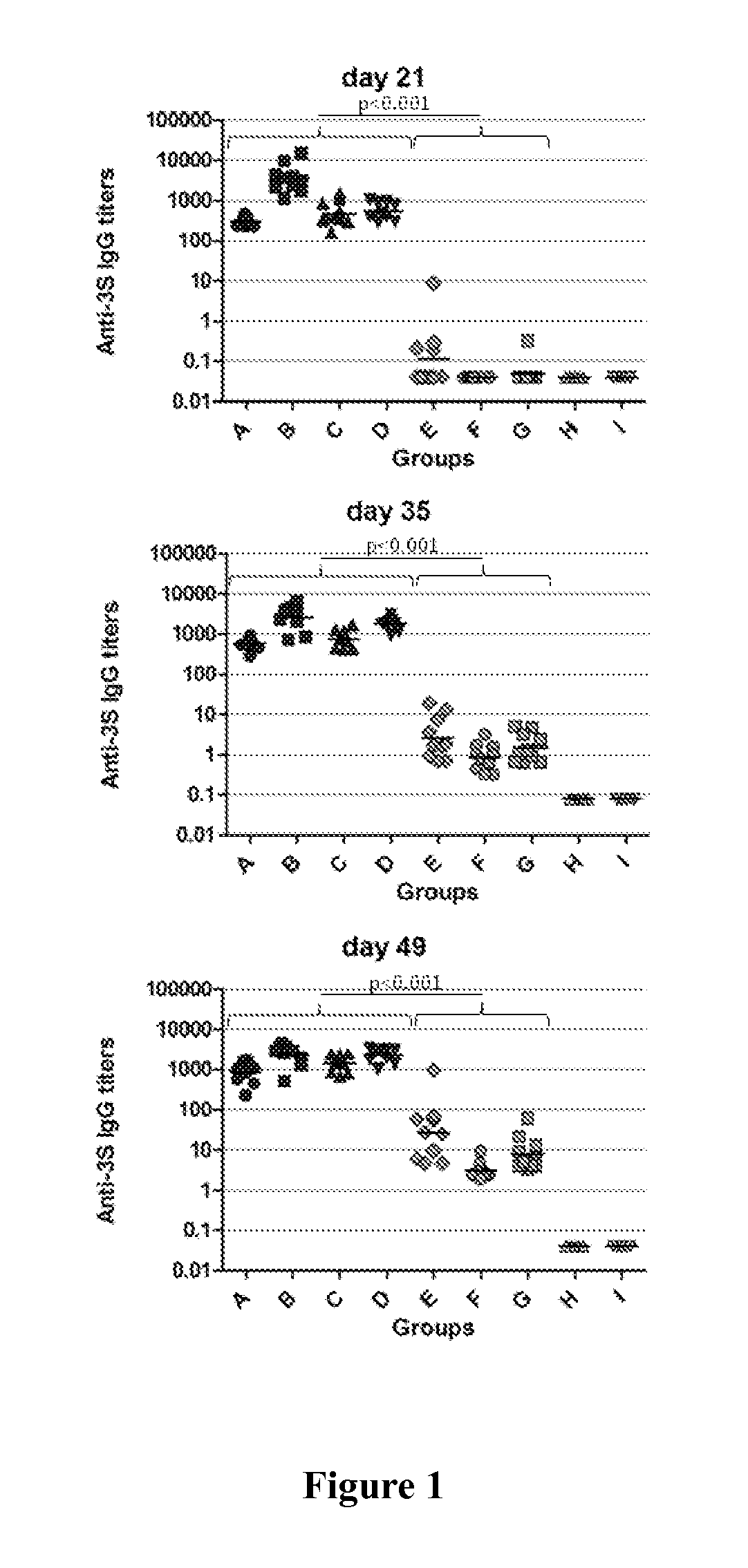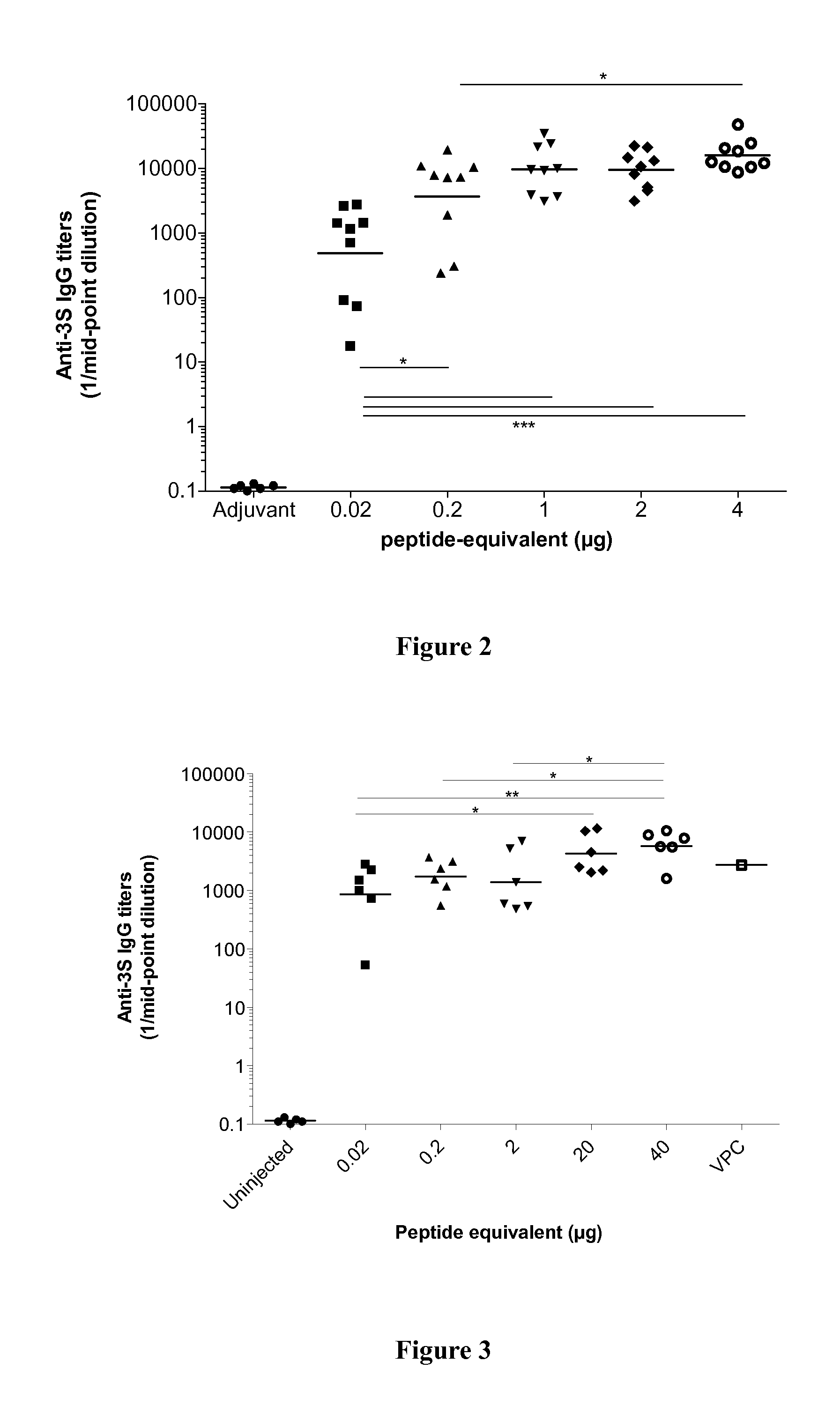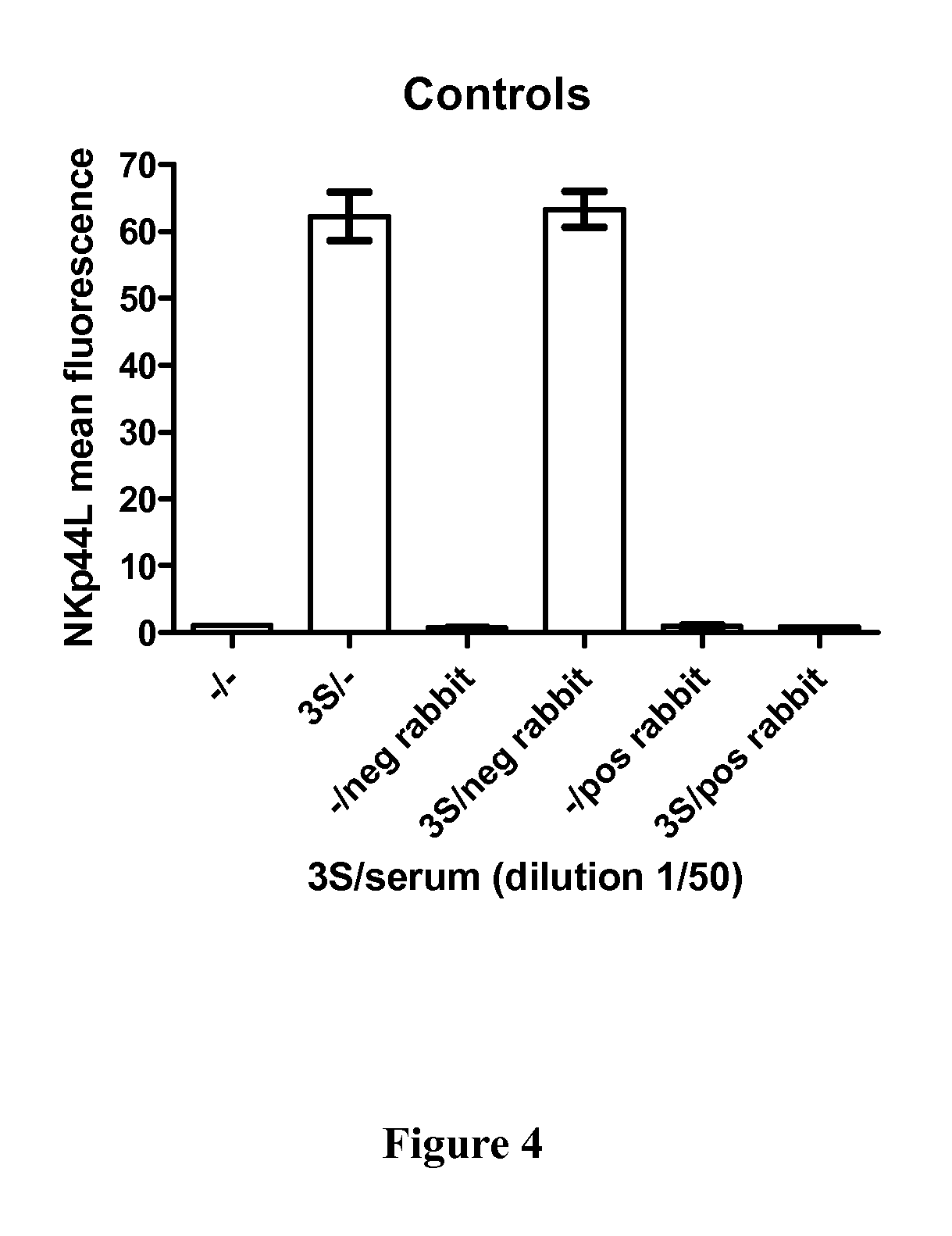Immunogenic compounds comprising HIV GP41 peptide coupled to CRM197 carrier protein
a carrier protein and immunogenic compound technology, applied in the field of vaccines directed against viruses, can solve the problems of long-term failure of chemotherapeutic methods of hiv treatment, raise serious concerns, and require the availability of further anti-hiv-1 therapeutic tools
- Summary
- Abstract
- Description
- Claims
- Application Information
AI Technical Summary
Benefits of technology
Problems solved by technology
Method used
Image
Examples
example 1
Preparation of an Immunogenic Compound and Determination of Some of their Properties
A. Preparation of Immunogenic Compounds
[0203]The following immunogenic compounds or conjugates were synthesized. There were derived from KLH and CRM197 using either MBS or SMPB as crosslinker molecules. The used peptide was the 3S peptide consisting of SEQ ID No 2 with either an additional cysteine residue at its amino-terminus end or at its carboxy-terminus end.[0204]CRM197-MBS-Nter(Cys)-3S[0205]CRM197-SMPB-Nter(Cys)-3S[0206]CRM197-SMPB-Cter(Cys)-3S[0207]KLH-MBS-Nter(Cys)-3S
[0208]For the sake of clarity, the peptide which is termed “Nter(Cys)-3S” above consists of the 3S peptide of SEQ ID No 5 herein.
[0209]Two heterobifunctional cross-linkers were tested: sulfo-SMPB (Sulfo-(Succinimidyl-4-(p-maleimidophenyl) Butyrate) and sulfo-MBS (Sulfo-(m-Maleimidobenzoyl-N-hydroxysuccinimide) ester). These molecules consist of a maleimide moiety linked by a polyethylene chain to an ester of N-hydroxysuccinimide ...
example 2
Comparative Assays
A. Materials and Methods
[0214]A.1. The various immuno-conjugate compounds tested in Example 2 have been prepared as disclosed in Example 1.[0215]A.2. The various compositions tested are disclosed in Table 1 below.
[0216]
TABLE 1GroupsABCDEFGHIN=1010101010101055CarrierCRM197CRM197CRM197CRM197KLHKLHKLH——Peptide3S16Nter3S16Nter3S16Nter3S16Nter3S16Nter3S16Nter3S16Nter——CrosslinkerSMPBMBSSMPBMBSMBSMBSMBS——AdjuvantAdjuphosAdjuphosAlhydrogelAlhydrogelIFAAlhydrogelAdjuphosAlhydrogelAdjuphosThe peptides of SEQ ID No 5 is also named anti-3S16Nter peptide.SMPB and MBS were purchased from PIERCE (Illinois, USA) or SIGMA (Missouri, USA)Adjuphos ® 2% (aluminium phosphate gel) was purchased from Brenntag (Frederikssund, Denmark). Adjuphos ® was used at a final concentration of 3 mg / ml of Al3+ ions, which final concentration is adapted to the administration of 300 μg of Al3+ ions per injection.Alhydrogel ® 2% (aluminium hydroxide gel) was purchased from Brenntag (Frederikssund, Denm...
example 3
Optimisation of the Formulation of the Immuno-Conjugate
[0231]Adsorption of antigen to aluminium salts is critical for the adjuvant effects and formulation of the vaccine antigens, especially salts, is an important element of the potential interaction between aluminium and the antigen. Aluminium hydroxide surface is composed of hydroxyl groups coordinated to aluminium. The surface charge of the phosphate aluminium is composed of both hydroxyl and phosphate groups. The adsorption of proteins by aluminium adjuvant is a complex process and involves contribution of electrostatic, hydrophobic ant other attractive forces.
[0232]The aim of these formulation studies was to obtain a vaccine preparation with a homogeneous and opalescent aspect, without visible aggregates after gentle shaking. The target of the study was to obtain a formulation that would adsorb at least 95% of the 3S drug substance onto the aluminium particles after one hour of incubation.
[0233]In first exploratory studies, the...
PUM
| Property | Measurement | Unit |
|---|---|---|
| concentration | aaaaa | aaaaa |
| concentration | aaaaa | aaaaa |
| concentration | aaaaa | aaaaa |
Abstract
Description
Claims
Application Information
 Login to View More
Login to View More - R&D
- Intellectual Property
- Life Sciences
- Materials
- Tech Scout
- Unparalleled Data Quality
- Higher Quality Content
- 60% Fewer Hallucinations
Browse by: Latest US Patents, China's latest patents, Technical Efficacy Thesaurus, Application Domain, Technology Topic, Popular Technical Reports.
© 2025 PatSnap. All rights reserved.Legal|Privacy policy|Modern Slavery Act Transparency Statement|Sitemap|About US| Contact US: help@patsnap.com



